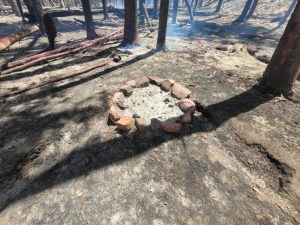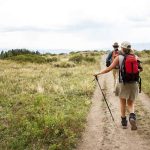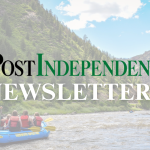What non-hunters should know during hunting season in the Roaring Fork Valley

Anna Stonehouse/The Aspen Times archives
While the local landscape has become a hub for non-hunting recreational activities, hunting has been part of the area’s tradition for centuries.
As hunting season begins in the state, non-hunters can still enjoy the backcountry in and around Aspen and the Roaring Fork Valley while taking precautions that promote their own safety and wellbeing.
“We encourage all recreationists to be courteous and respectful of other uses on the Forest, including other forms of recreation, all year long,” David Boyd, public affairs officer for the White River National Forest, said.
With that, Colorado Parks and Wildlife’s big game season dates are as follow:
- Rifle bear season – Sept. 2-30, 2025
- Archery season – Sept. 2-30, 2025
- Muzzleloader season – Sept. 13-21, 2025
- Rifle seasons
- 1st season – Oct. 15-19, 2025
- 2nd season – Oct. 25 to Nov. 2, 2025
- 3rd season – Nov. 8-16, 2025
- 4th season – Nov. 19-23, 2025
For a complete list of season dates, visit cpw.widencollective.com/assets/share/asset/erjzbk48be.
Originally the summer hunting grounds and ancestral territory of the Uncompahgre Tribe of the Ute Nation, Aspen then saw miners and early settlers also rely on hunting as a means for survival, according to Eliza Voss, vice president of Destination Marketing for the Aspen Chamber Resort Association.
“So hunting in the area has been a way of life, first for survival and now as recreation, as well as sustenance,” Voss said.
Aspen is within CPW’s game management units, or hunting areas, 47, 431, and 471, and near game management units 43, 48, 55, and 444. This includes areas inside the Maroon Bells-Snowmass Wilderness and the Scenic Loop outside of the scenic area. A full map can be found at ndismaps.nrel.colostate.edu/index.html?app=HuntingAtlas.
As hunters and non-hunters continue to share the local landscape, CPW requires big game hunters using a firearm to wear fluorescent orange or pink when in the field. The agency encourages non-hunters to do the same. Non-hunters are also advised to stick to established trails and keep their pets on a leash at all times, according to CPW Statewide Public Information Officer Joey Livingston.
ACRA’s visitor center staff echoes this advice, Voss said, recommending all trail users — visitors and residents alike — wear bright kerchiefs, hatbands, vests, or backpacks, and stay on designated trails with dogs leashed.
“Hunters use the same roads, trailheads, and trails to access the White River National Forest as recreationists who are not hunting,” Boyd said, although he pointed out that hunters, particularly the bow hunters and muzzleloader hunters on the forest in September, are typically using the trails to get into more remote areas.
Livingston confirmed that, because hunters often go into more remote areas than other recreationists, hunting accidents are rare and generally occur between hunters themselves without involving non-hunters.
“Hunters are generally away from areas frequented by non-hunters; interactions are most common at trailheads,” he said. “Non-hunters should be aware that you may see hunters at access areas or trailheads, and seeing hunters with firearms this time of year is generally not a cause for concern.”
He acknowledged there are also rare cases of non-hunters illegally interfering with hunters — such as causing animals to flee, denying access to public areas, or injecting oneself into the line of fire — but could not confirm if there has been an increase or decrease in these infrequent incidents.
Boyd noted that he is not aware of any recent interference cases on the White River National Forest.
Any U.S. Forest Service restrictions or closures will apply to both hunters and non-hunters. The lands managed by the White River National Forest are open to legal hunting under CPW regulations, and any closures during the season will be posted under “alerts” on the White River website fs.usda.gov/r02/whiteriver.
White River National Forest, Bureau of Land Management to lift fire restrictions
The White River National Forest and the Bureau of Land Management Upper Colorado River District will lift fire restrictions Friday due to current conditions.

Support Local Journalism

Support Local Journalism
Readers around Glenwood Springs and Garfield County make the Post Independent’s work possible. Your financial contribution supports our efforts to deliver quality, locally relevant journalism.
Now more than ever, your support is critical to help us keep our community informed about the evolving coronavirus pandemic and the impact it is having locally. Every contribution, however large or small, will make a difference.
Each donation will be used exclusively for the development and creation of increased news coverage.









